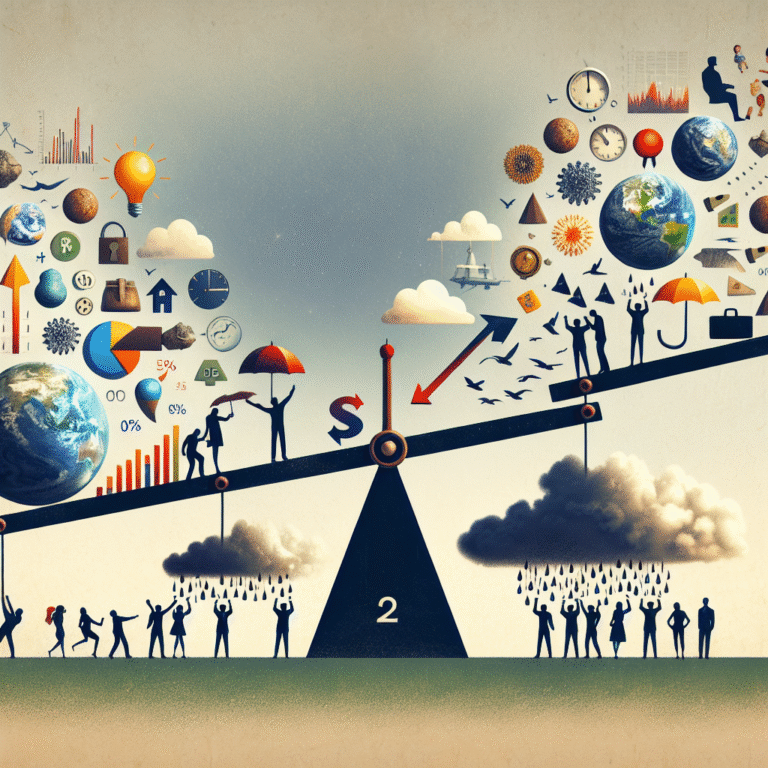
Introduction
In the fast-paced landscape of modern life, where data drives decisions from boardrooms to hospitals, statistical analysis stands as a beacon of insight. The term "Statistical Analysis in the Real World: Case Studies That Made an Impact" evokes a treasure trove of stories where data transformed outcomes, shaped policies, and saved lives. This transformative power of statistical analysis is not merely confined to theory; it resonates through compelling case studies that illuminate its significance across various sectors.
In this article, we’ll embark on a journey through the intriguing world of statistical analysis, unveiling stories that showcase its real-world applications and profound effects. From healthcare to marketing, public policy to sports, we will explore how statistical practices can create positive change, offering not only a deeper understanding but also inspiring actionable insights.
Understanding Statistical Analysis
What is Statistical Analysis?
Statistical analysis involves collecting, evaluating, interpreting, and presenting substantial data to derive meaningful conclusions. Statistical methods help researchers and decision-makers understand trends, test hypotheses, and make forecasts based on empirical data.
Importance in the Real World
In every sector, statistical analysis plays a critical role in decision-making. Whether it is a company evaluating customer behavior or a government assessing the effectiveness of a new policy, the principles of statistical analysis ensure that actions are guided by evidence. Understanding "Statistical Analysis in the Real World: Case Studies That Made an Impact" requires us to appreciate its power in elucidating complex situations and informing strategies that catalyze improvement and progress.
Case Studies That Demonstrate Impact
1. Healthcare: The CDC and the Flu Vaccine
One of the most profound applications of statistical analysis can be seen in the Center for Disease Control and Prevention (CDC) and its efforts regarding the flu vaccine. Every year, the CDC utilizes statistical models to predict the strains of the virus that are likely to circulate. By analyzing previous flu seasons, researchers collect and assess data to inform the vaccine formulation for the upcoming year.
Analysis
The effectiveness of this approach can be measured in saved lives and reduced healthcare costs. The statistical analysis in predicting flu strains has been crucial in minimizing the impact of influenza outbreaks, illustrating the critical role of data-driven methodologies in public health.
2. Marketing: Target’s Predictive Analytics
In the retail world, Target’s use of predictive analytics is a remarkable case of statistical analysis in action. By analyzing customer purchase patterns and demographic data, Target developed the ability to anticipate customers’ needs and preferences. For instance, the company famously identified pregnant customers before they announced their pregnancies by analyzing buying trends related to maternity products.
Analysis
This targeted approach boosted sales and enhanced customer satisfaction, proving the effectiveness of statistical models in personalizing marketing strategies. This case study greatly demonstrates how "Statistical Analysis in the Real World: Case Studies That Made an Impact" can translate data into a powerful competitive advantage.
3. Sports: Moneyball and Sabermetrics
The realm of sports provides yet another fascinating illustration of statistical analysis through the “Moneyball” approach embraced by the Oakland Athletics baseball team. By employing sabermetrics—statistical analysis of baseball data—team management radically changed player recruitment and game strategy.
Analysis
The success of the Oakland Athletics in competing against wealthier teams highlighted how statistical analysis can revolutionize traditional practices. Their story is a testament to the power of data-driven decision-making that challenges conventional wisdom in sports.
4. Finance: Risk Assessment Models
In the finance sector, statistical analysis plays a pivotal role in risk assessment models devised by banks and investment firms. During the 2008 financial crisis, many institutions relied on flawed statistical models that underestimated risk. In contrast, organizations that employed rigorous statistical analysis managed to navigate the crisis more effectively.
Analysis
This episode serves as a cautionary tale encapsulating the necessity for robust statistical methods in finance. The case showcases how "Statistical Analysis in the Real World: Case Studies That Made an Impact" can either safeguard a business or precipitate disaster.
5. Politics: Election Forecasting by FiveThirtyEight
Nate Silver’s FiveThirtyEight has become synonymous with accurate election forecasting through sophisticated statistical analysis. By aggregating data from various polls and applying statistical techniques to predict electoral outcomes, FiveThirtyEight changed the landscape of political forecasting.
Analysis
The success of this model significantly impacted public opinion and campaign strategies, demonstrating how statistical analysis can influence real-world events on a grand scale.
The Process of Statistical Analysis
Understanding how to effectively conduct statistical analysis is crucial. The following steps illustrate a general approach:
- Data Collection: Gather relevant data through surveys, experiments, or existing databases.
- Data Cleaning: Prepare the data for analysis by handling missing values and eliminating outliers.
- Descriptive Statistics: Summarize data using measures such as mean, median, mode, and standard deviation.
- Inferential Statistics: Use samples to draw conclusions about a population, applying tests like t-tests or ANOVA.
- Modeling: Employ regression models, machine learning, or other statistical modeling techniques to predict future outcomes.
- Interpretation: Draw conclusions from the analysis and consider practical implications.
- Presentation: Present findings using tables and charts to facilitate understanding.
Common Tools for Statistical Analysis
- Excel: Suitable for basic analysis and data visualization.
- R: A powerful programming language tailored for statistical calculations and data visualization.
- Python: Popular for its versatility, especially with libraries like Pandas and SciPy.
- SPSS: Widely used in social sciences for advanced statistical analysis.
Challenges and Considerations
While the benefits of statistical analysis are manifold, some challenges should be addressed:
- Data Quality: Poor quality data can skew results, leading to faulty conclusions.
- Overfitting: In predictive modeling, overly complex models may perform well on training data but fail on unseen data.
- Interpretation: Misinterpreting data can lead to erroneous decisions or policy implementations.
- Bias: Researchers’ biases can inadvertently influence study designs and outcomes.
- Ethical Considerations: The use of statistical analysis, particularly in areas like healthcare and criminal justice, must be approached ethically to avoid discrimination or unfair biases.
Conclusion
The exploration of "Statistical Analysis in the Real World: Case Studies That Made an Impact" reveals how this vital practice transcends theoretical limitations to effectuate real-world change. Each case study—from healthcare to politics—demonstrates the necessity of grounding decision-making in credible, evidence-based statistical analysis.
As we continue to navigate an era defined by data, the lessons drawn from these numerous case studies encourage professionals across sectors to cultivate their understanding of statistical methods. Embrace the power of statistical analysis not just as a tool but as an essential practice that can inspire progress and innovation.
FAQs
1. What is the importance of statistical analysis in decision-making?
Statistical analysis helps sift through data to identify trends, validate hypotheses, and guide strategic decisions, ultimately leading to more informed and effective outcomes.
2. How can I improve my data analysis skills?
Consider taking online courses on statistics, learning to use tools like R or Python, or participating in workshops to apply your skills in real-world scenarios.
3. What are the common mistakes in statistical analysis?
Common mistakes include confusing correlation with causation, failing to account for biases, and using inappropriate statistical tests for the data type.
4. How long does it take to perform statistical analysis?
The time required can vary widely based on data complexity and volume, the depth of analysis, and the skill level of the analyst. Simpler analyses may take hours, while comprehensive studies could take weeks or longer.
5. Can statistical analysis be applied in everyday life?
Absolutely! From evaluating personal finances and understanding health data to making informed consumer choices, statistical analysis can enhance making everyday decisions.
Embrace statistical analysis in your own endeavors and witness the transformative effect it can have!














